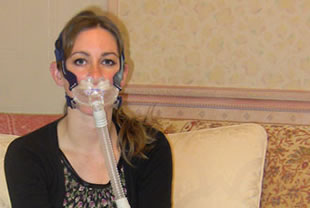


Theme
Virtual Patients and eCase Studies
Category
Virtual Patients
INSTITUTION
University of Southampton, University Hospital Southampton NHS Foundation Trust

Most Virtual Patients (VP) are aimed for health professionals. At the University of Southampton (UoS) Faculty of Medicine we developed a VP, which supports learning about rare diseases to health professionals and patients/relatives/friends/carers. Illustrating the emotional impact on the patients and those who treat and care for them, it presents core concepts of a rare disease. ‘Sam’, a patient newly diagnosed with Pompe’s disease (a rare disorder of glycogen storage), was approached for this VP development (http://www.youtube.com/watch?v=8dh3Junu4hQ).


Whilst a small number of users have participated in the questionnaire to date, the initial results suggest that this type of VP facilitates learning and understanding of rare disorders in a meaningful and relevant way to a variety of users.
.jpg)
More VPs, which support learning of rare diseases for health professionals and patients/friends/relatives, are recommended.
Developed based around interviews with Sam, illustrating her medical, emotional and on-going journey with Pompe’s disease, the VP (www.southampton.ac.uk/pompe/) integrates core concepts of Pompe’s disease. With an embedded questionnaire to investigate its usability, effectiveness and impact, it was made freely available via Internet in October 2011 and introduced to the University of Southampton undergraduate students as part of the curriculum.
1420 visits to the VP, including ones by 133 UoS medical students, were recorded, and 37 users, from the mother of a child patient to a Consultant Neurologist, completed the questionnaire. They were from the UK (24), and USA, Canada, South Africa, Romania and Brazil (12). The feedback on the resource was positive from each group of users. Healthcare professionals appreciated the concise and informative nature of the resource. Patients/friends/relatives benefited from the contextualised information presented through Sam’s journey.
The questionnaire respondents consist of:
- 13 health professionals
- 12 medical students
- 10 patients
- 2 carer/friends/family
Change in perception towards the Pompe’s disease
- Yes: 14
- No: 5
|
Questions for health professionals (no of respondents: 13) |
|
|
yes |
no |
|
a. Has the Sam’s story illustrated in the videos helped you empathise with patients with rare diseases? |
100% (13) |
0% (0) |
|
b. Have the videos helped you understand the symptoms associated to Pompe’s Disease? |
100% (13) |
0% (0) |
|
c. Can you identify the symptoms of Pompe’s Disease if you see a patient with it? |
100% (13) |
0% (0) |
|
d. Would you feel comfortable discussing the diagnosis of Pompe’s Disease with a patient or their relatives? |
90.9% (10) |
9.1% (1) |
|
e. Do you have a greater understanding of the clinical process in patients with rare diseases? |
83.3% (10) |
16.7% (2) |
Special thanks to “Sam”, who shared her story to help health professionals and patients/family/cares/friends with Pompe’s disease to learn more about the Pompe’s disease and its impact on patients.
For more information, contact Sunhea Choi: s.choi@soton.ac.uk.
 Send Email
Send Email